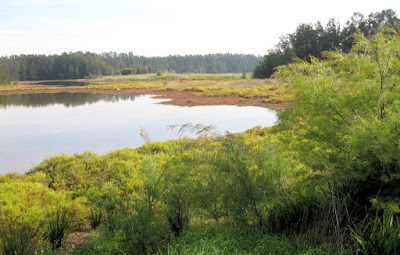
Control transferred to the Royal Australian Navy in 1921, and the RAN Armament Depot expanded up until the 1960s. The depot remained one of two Navy ammunition storage depots in Sydney until December 1999, with ownership transferring to the State Government's Olympic Coordination Authority.
 |
| Bld 20 -1897 Powder magazine |
The Heritage Railway
This is a 2-foot gauge railway powered by storage battery locomotives, which was used to transport munitions from the wharf to magazines scattered throughout the site. The photo below (bottom left) shows a mock-up of such a train. As you can see it has now been adapted to take tour passengers.


I have wanted to visit Newington Armory since our walking group visited the area on a week day earlier this year. On that occasion we saw the wharf and the gatehouse.
The Armory is only open on the weekends, and the Heritage Railway, which takes you into a restricted section of the reserve, only runs Sundays (10.30am to 1pm when I visited).
If walking or cycling, the Newington Armory can be reached along the River Walk - from the Wilson Park (Silverwater Rd.) end, or from the Sydney Olympic Park Wharf (~2Km) (see 525 & 526 bus routes). The nearby Blaxland Riverside Park is a very popular spot on the weekends, and cars were parked back along Jamieson St. to Holker St. when I visited. Location map





















